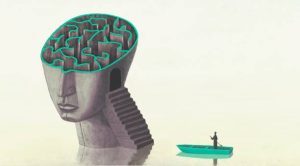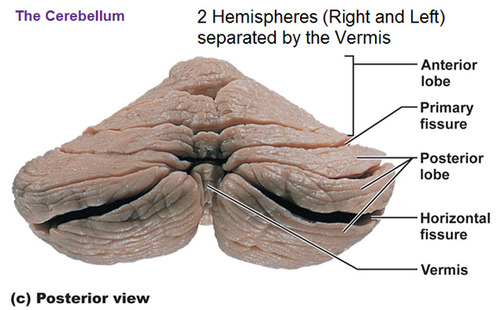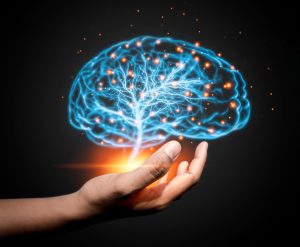What if the part of your brain that could hold the key to healing after a traumatic brain injury isn’t the one most doctors are focused on? When most people think about the brain, they picture the wrinkled surface of the cerebral cortex—where thoughts are formed, language is processed, and memories are stored. But deep beneath that surface lies a small, often overlooked region with enormous potential: the cerebellum. And according to Dr. John W. Jung, author of Alternative Treatments to TBI: What Should You Do for Brain Injury Recovery Immediately?, the cerebellum may be one of the most powerful players in helping the brain heal after injury. In traditional medical recovery from traumatic brain injury (TBI), the cerebellum rarely gets the spotlight. Conventional approaches tend to focus on the damaged areas shown in scans and treat symptoms with medications or generalized therapy. While these treatments serve an important role, they often overlook the cerebellum’s vital function in coordinating not just physical movement, but also eye tracking, balance, emotional control, and even higher cognitive processes.
Dr. Jung believes that understanding—and activating—the cerebellum is one of the most effective, yet underused, strategies in brain injury recovery. In his book, he explains that the cerebellum communicates closely with the frontal lobe, often working from the opposite side of the body. In fact, he points out that 95% of the time, the frontal lobe processes input from the opposite cerebellar hemisphere. This means that stimulating one side of the body can directly influence how the opposite side of the brain functions. This knowledge is more than just interesting science—it’s a roadmap to healing. Dr. Jung’s approach is rooted in functional neurology and chiropractic care, but it’s deeply practical and designed for real people looking for real results. He outlines a number of simple, targeted activities that help engage the cerebellum and send helpful signals to the brain. For example, spinning in a chair to the left can activate the weaker side of the cerebellum, while moving your eyes upward on the weak side or stimulating a specific hand or foot can improve brain-body communication. These are not random actions—they’re part of a thoughtful, structured system to wake up the parts of the brain that have gone quiet after trauma.
In many cases, a traumatic brain injury causes imbalances. One side of the brain may be working harder than the other, and the cerebellum’s ability to coordinate left-right processing can break down. This can result in dizziness, confusion, trouble with movement, speech issues, or even emotional instability. Yet these symptoms are often treated as isolated issues, rather than signs of more serious cerebellar dysfunction. Dr. Jung’s work urges us to see the bigger picture—and to treat the source rather than the symptoms. The exercises he shares aren’t invasive or complex. They’re based on natural movements and sensory input—like using sound, smell, touch, and vision to activate targeted brain regions. The left temporal lobe, for example, prefers visual landmarks and music in the right ear, while the right temporal lobe responds better to music in the left ear. The cerebellum helps coordinate how these inputs are processed and balanced. If it’s not fully functioning, the whole system suffers. But when stimulated correctly, the cerebellum can become a bridge to restoring brain harmony.
One of the most empowering messages in Dr. Jung’s book is that these techniques don’t require waiting for insurance approval or a hospital appointment. Many of them can be done safely at home with the help of a caregiver. This puts healing back in the hands of patients and families—literally. It transforms recovery from a passive experience into an active, hopeful journey. Dr. Jung’s passion for chiropractic neurology shines through in every chapter of the book. He supports for a broader view of brain care—one that includes the cerebellum as a central player, not a background detail. He doesn’t dismiss traditional medicine but instead builds upon it, offering an expanded vision that blends science with a deep respect for the body’s natural healing intelligence.
He also emphasizes the importance of personalization. Every brain injury is different, and every person’s response to therapy will vary. That’s why understanding the cerebellum’s role in balance, rhythm, and body control is so important. With targeted exercises, patients can gradually restore their sense of stability, focus, and coordination, often leading to improvements in emotional regulation and memory as well. From a scientific perspective, this makes perfect sense. The cerebellum contains more neurons than the rest of the brain combined, yet it only takes up about 10% of the brain’s volume. That’s an extraordinary amount of processing power packed into a small space. And as Dr. Jung points out, it’s one of the first regions to engage when you move, think, or feel. So when recovery stalls or symptoms linger, perhaps it’s not because healing isn’t possible—but because the cerebellum hasn’t been properly engaged.
Throughout the book, Dr. Jung explains these ideas with compassion and clarity. His writing is never technical for the sake of sounding smart—it’s practical and easy to understand. He speaks to caregivers, patients, and healthcare professionals alike, inviting them to look beyond traditional methods and explore the deeper connections within the brain. And at the heart of it all is the cerebellum—quiet, powerful, and essential.




